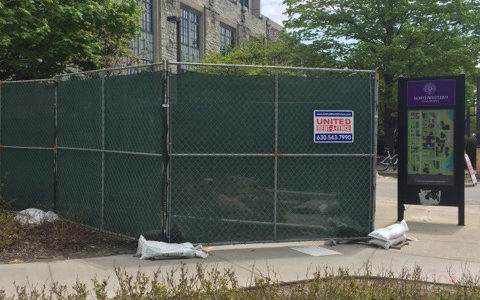
When infrastructure fails, response time matters. A burst water main, sudden sinkhole, or collapsed roadway poses immediate danger—not just to vehicles and pedestrians, but to utility crews and emergency workers. In these situations, physical containment is essential. That’s where emergency fence and emergency rental fence services play a critical role.
Whether it’s protecting people from a utility hazard or giving crews space to work safely, temporary fencing offers a fast, reliable solution. And in busy areas like Greater Chicago, where traffic, weather, and public safety concerns all collide, the right fence can help bring order to chaos.
The First Priority: Keep People Out, Keep Crews Safe
Infrastructure emergencies are rarely confined to predictable spaces. A broken water line might flood an intersection. A downed power line can block sidewalks and driveways. These hazards appear suddenly and can quickly escalate if not contained.
Emergency fence provides a visual and physical barrier to keep the public at a safe distance. Unlike cones or tape, temporary fencing is more difficult to bypass, clearly marks danger zones, and holds up in wind or rough terrain.
In the case of sinkholes or street failures, panel fence systems can prevent vehicles and pedestrians from approaching unstable ground. For utility crews, it defines a secure work zone and reduces the risk of interference from onlookers or traffic.
Fast Setup for Rapid Response
Speed is critical in emergencies. Municipal agencies, utility companies, and contractors often call for emergency rental fence when a hazard emerges and immediate containment is needed. Most rental providers can mobilize same-day installations, delivering and setting up fence panels quickly—even in hard-to-reach urban areas.
Panel fences are ideal for these scenarios. They’re freestanding, require no digging, and can be placed around any layout. Crews can adjust the configuration on-site to match the spread of damage or evolving safety needs.
Some setups also include privacy screening or signage to keep the public informed while securing the perimeter.
Common Emergency Use Cases
Temporary fencing is used in a range of infrastructure emergencies, including:
- Water main breaks: To block off flooded streets and guide traffic around repair zones.
- Sinkholes: To contain the hazard and prevent accidental falls or structural damage.
- Gas leaks: To define a no-entry zone for safety and regulatory compliance.
- Downed power lines: To prevent accidental contact or unauthorized access near energized areas.
- Collapsed sidewalks or roadbeds: To restrict access until structural assessments can be completed.
In each case, fencing reduces liability and speeds up repair by giving crews a safe, controlled workspace.
Not Just for Public Agencies
Private developers, contractors, and property managers also need access to emergency fence when on-site utility issues arise. A broken sewer line on a commercial property or a structural failure during construction can create immediate danger. Having a plan in place with a local fence rental provider means you can act fast and stay ahead of the risk.
Some organizations even pre-stage fence panels during storm season or major infrastructure projects to reduce response time if something goes wrong.
Compliance and Communication
In many municipalities, failing to properly secure a public hazard can result in fines or legal exposure. Temporary fencing demonstrates due diligence and meets the expectations of local code enforcement officers and public safety officials.
It also communicates clearly to the public: “This area is under control—stay back.” That matters, especially when incidents happen near schools, transit hubs, or retail areas where foot traffic is heavy.
Be Ready Before the Emergency Hits
You can’t always predict when infrastructure will fail, but you can plan for how you’ll respond. Having a trusted emergency rental fence provider on call gives you an edge when time, safety, and compliance are on the line.
If you manage facilities, utilities, or public spaces, now is the time to review your response protocols and make sure fencing is part of the plan.
Need fast, reliable emergency fence support? Contact us to request a quote and be ready before the next hazard appears.




